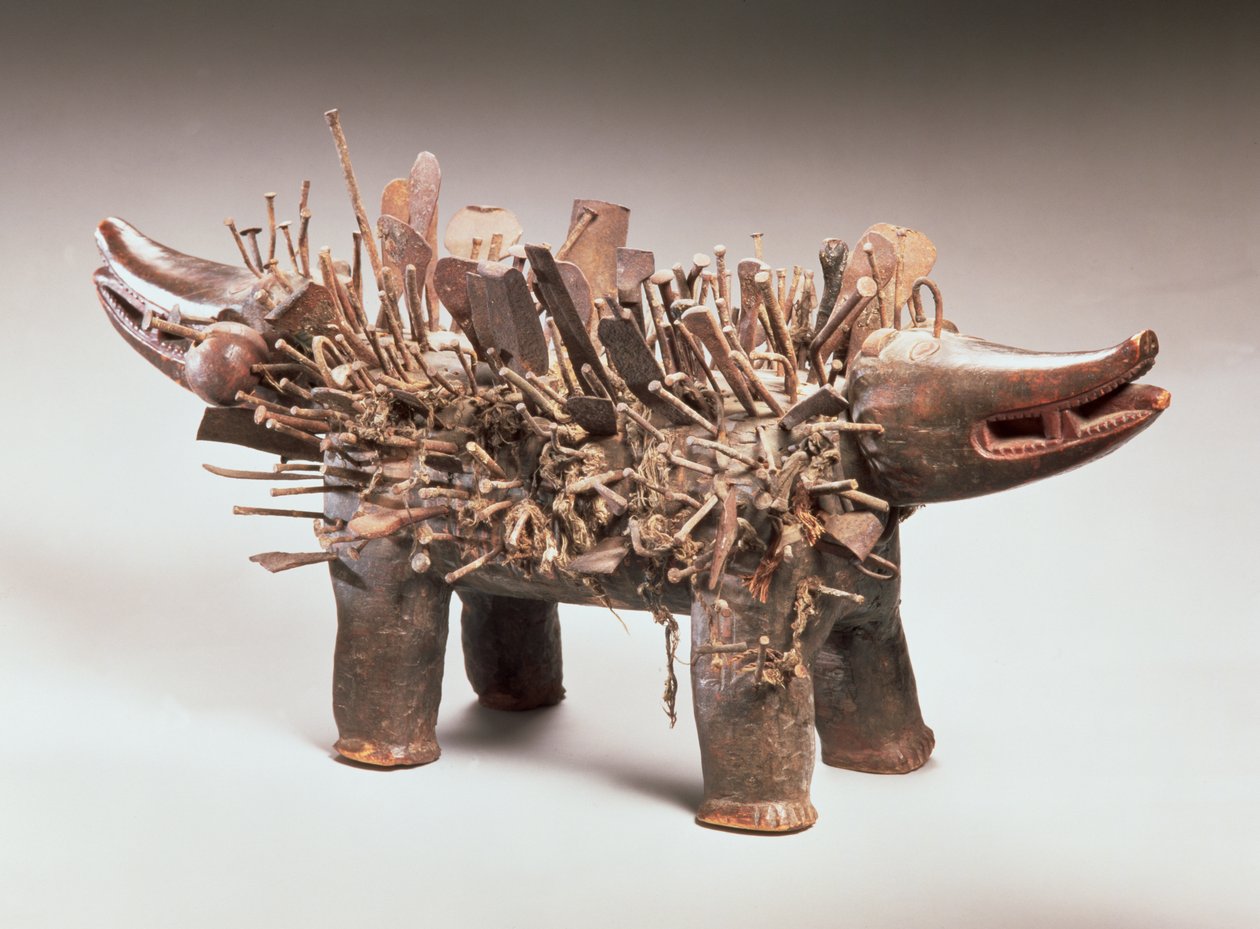African art
1/24
There's no tags or description
Looks like no tags are added yet.
Name | Mastery | Learn | Test | Matching | Spaced |
|---|
No study sessions yet.
25 Terms
How Great Zimbabwe served elite rulers
as a thriving fourtheenth-century Shona site that was part of an extensive trade network.
How scholars believe that the conical tower of Great Zimbabwe functioned symbolically
By referencing the form of a granary which recalled the generosity of the Shona ruler to his people
How Great Zimbabwe is most similar to Machu picchu
its undulating stone masonry that was constructed without mortar
What ensured viewers would recognize the Ndop (portrait figure) as King Mishe miShyaang maMbul
the subject of the work chose to be represented with a carved drum positioned in front of the seated figure
Why the relatively naturalistic ndop’s anatomical proportions were altered
to emphasize the king’s large head which was considered the seat of intelligence and wisdom
What art historians believe that the ndop figures such as the portrait of King Mishe miShyaang MaMbul incorporated figural representation served as
a historical marker for the Kuba community, since most of their cultural traditions were transmitted orally.
How the architects of the Great Mosque of Djenne achieved a rhythmic effect in the facade of the building
the inclusion of a series of towers and engaged columns
What the sculptor of the Benin wall plaque from the Oba’s palace was inspired by and why
the hierarchic scale for viewer’s respect and admiration of the oba
How the Yoruba sculptor of Isle created pieces
With elongated forms, dynamic use of negative space, and architectural function
What the use of horn in the Ikenga shrine figure alludes to
the aggressive strength of the head.
Why the Lukasa can be attributed to the Luba culture
Its use as a mnemonic device in retelling oral legends
How bundu masks reflect the cultural values of the society that originally created them
with depictions of fat rolls around their necks, downcast eyes, and small mouths to illustrate ideal beauty and morality
Why the nganga drives a nail or pointed object into a Nkisi n’kondi figure
In order to activate the spiritual power inside the figure.
How the veranda post of enthroned King and senior wife (Opo Ogoga) is similar to the Mayan Yaxchilan Lintel
both works represent the importance of royal wives
The Chokwe peoples are best attributed for this mask
Pwo (Female) Mask, Chokwe People

This sculpture is best identified as
A Nkisi n’kondi (power figure)

What the inclusion of projected beams to help with re plastering the mosque demonstrates
continuity within the west African tradition of building adobe structures
What the choice of a gold-leaf covering for the Golden Stook (sika dwa Kofi) of the Ashanti people was most probably motivated by
veneration of the Stook as a sacred object
what traditional characteristics of Lukasa vary in and maintain
They vary in surface details and added elements but maintain similar size and shape
What the female (Pwo) mask demonstrates and how
Continuity within the Chowke artistic tradition through its deception of the ideal, graceful, and wise woman.
Why the artist who created the Aka elephant mask continued the Bamileke tradition of incorporating elephant imagery in the work
because elephants were associated with the power and authority of kings.
What a carved figure with bent knees sits atop
A cylindrical bark contained filled with ancestral relics
How the artist created formal balance in a plaque from the Kingdom of Benin
By producing symmetry through the placement of the figures
What from the Mende people plays an important role in initiation rituals for girls
Bandu Masks
what prevailing interpretation is found in the presence of Baule people in west Africa
The Mblo masks that make it possible for the invisible world to affect the human world.